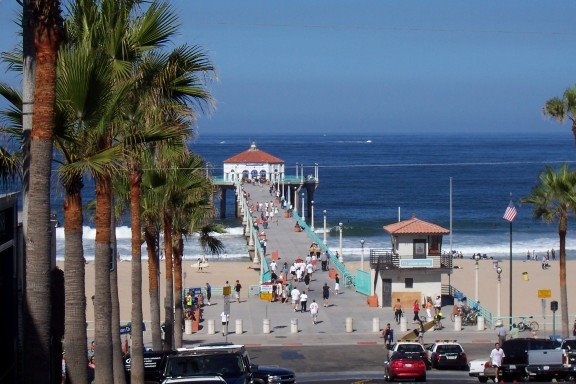
As many of you know..I like Lou Barnes because he sees all sides of the picture... in a recent article he takes on both the bulls and the bears and shares his views about what is happening in the market. Most noteworthy is his take on Case-Shiller. The Case-Shiller Index has taken on a life of it's own.. not for what it actually is but rather for what many people think it is. The fact that it is now called the S&P Case-Shiller Home Price Indices makes it more authorative for many consumers. Case-Shiller provides useful information about market trends using certain types of homes.
Most people don't understand just what Case-Shiller actually tracks.. it tracks homes sales of the same home over time.. not the same address but the same home. Case-Shiller uses a rather limited base for the index. Case-Shiller doesn't track new construction or townhomes/condos. Whoops.. that's a lot of our market... Nor does it track homes that sell to developers that are torn down and two townhomes built. That is a big part of the housing market in Redondo and the sand sections of Manhattan and Hermosa. It can't track a duplex in the sand section that was torn down and replaced with a single family home as it doesn't track residential income properties or new construction. The truth is that Case-Shiller doesn't track most of the housing that makes up our Beach Cities real estate market. Depending on Case-Shiller in our little slice of heaven is probably not the best resource for a potential buyer.
Case-Shiller tracks home sales in 20 Metro areas. In our metro area the index tracks homes in the City of Los Angeles, Long Beach and Santa Ana. These areas have little in common with Manhattan Beach, Hermosa Beach, Redondo Beach and El Segundo. Long Beach has seen their entire market fall apart with large numbers of short sales and foreclosures... while the Beach Cities have not had a lot of foreclosures or even short sales when compared to other areas used by the index. Los Angeles is so large and has so many diverse areas in a state of flux that tracking same home sales is no easy matter. Santa Ana is just simply a different world. Yet if the Case-Shiller report says home prices will drop 30% in this metro area consumers automatically believe this will happen to home prices in Manhattan, Hermosa or Redondo.
The problem is that we really don't conform to the guidelines of the index. Anyone who has been in the Beach Cities for 5 years or more knows the supply of homes continues to change making it harder and harder to find same home sales over a period of time. Small homes are torn down and replaced with large homes. We add on and up and reconfigure interiors with gourmet kitchens, baths and any other item we can think of to improve the home. We are the remodeling magazine's dream locality. Much of the value in our area is based on location, lot size and view not on the actual physical structure. None of these categories plays a part in the index. Trying to use Case-Shiller as the ultimate measure of value and pricing trends in the Beach Cities makes little sense.
Case-Shiller is good for what it is.. and that is one of the tools a buyer or seller can use to help establish trends. But if you are depending on it to give you an accurate measure of value in Manhattan Beach and the Beach Cities you are going to be disappointed. Buyers and Sellers need to know what is happening overall in their local real estate markets. Buyers and Sellers need to be aware of the difference in pricing that can happen if you are on the north side compared to the south side of the street or the east side compared to the west side. Most of us know you can't compare home prices in Manhattan Beach with home prices in South Redondo. Physically they may be close but price wise they are very far apart. National trends are interesting but knowing what is happening in your local market is the best gage of value whether you are buying or selling.
Most people don't understand just what Case-Shiller actually tracks.. it tracks homes sales of the same home over time.. not the same address but the same home. Case-Shiller uses a rather limited base for the index. Case-Shiller doesn't track new construction or townhomes/condos. Whoops.. that's a lot of our market... Nor does it track homes that sell to developers that are torn down and two townhomes built. That is a big part of the housing market in Redondo and the sand sections of Manhattan and Hermosa. It can't track a duplex in the sand section that was torn down and replaced with a single family home as it doesn't track residential income properties or new construction. The truth is that Case-Shiller doesn't track most of the housing that makes up our Beach Cities real estate market. Depending on Case-Shiller in our little slice of heaven is probably not the best resource for a potential buyer.
Case-Shiller tracks home sales in 20 Metro areas. In our metro area the index tracks homes in the City of Los Angeles, Long Beach and Santa Ana. These areas have little in common with Manhattan Beach, Hermosa Beach, Redondo Beach and El Segundo. Long Beach has seen their entire market fall apart with large numbers of short sales and foreclosures... while the Beach Cities have not had a lot of foreclosures or even short sales when compared to other areas used by the index. Los Angeles is so large and has so many diverse areas in a state of flux that tracking same home sales is no easy matter. Santa Ana is just simply a different world. Yet if the Case-Shiller report says home prices will drop 30% in this metro area consumers automatically believe this will happen to home prices in Manhattan, Hermosa or Redondo.
The problem is that we really don't conform to the guidelines of the index. Anyone who has been in the Beach Cities for 5 years or more knows the supply of homes continues to change making it harder and harder to find same home sales over a period of time. Small homes are torn down and replaced with large homes. We add on and up and reconfigure interiors with gourmet kitchens, baths and any other item we can think of to improve the home. We are the remodeling magazine's dream locality. Much of the value in our area is based on location, lot size and view not on the actual physical structure. None of these categories plays a part in the index. Trying to use Case-Shiller as the ultimate measure of value and pricing trends in the Beach Cities makes little sense.
Case-Shiller is good for what it is.. and that is one of the tools a buyer or seller can use to help establish trends. But if you are depending on it to give you an accurate measure of value in Manhattan Beach and the Beach Cities you are going to be disappointed. Buyers and Sellers need to know what is happening overall in their local real estate markets. Buyers and Sellers need to be aware of the difference in pricing that can happen if you are on the north side compared to the south side of the street or the east side compared to the west side. Most of us know you can't compare home prices in Manhattan Beach with home prices in South Redondo. Physically they may be close but price wise they are very far apart. National trends are interesting but knowing what is happening in your local market is the best gage of value whether you are buying or selling.





6 comments:
Here is a comment for you Kaye...look at CAR report. All of CA down ~30%.
Look at the South Bay report. Prices are UP, but all the constituent cities are DOWN.
Right now, medians are probably very suspect. Prices are certainly down, but with the mortgage markets normalizing (ha, ha, going back to rational standards), there is a big change in the mix of what is selling.
So medians right now are probably very misleading.
So yes, Case-Schiller is at the metropolitan level. But at least it is tracking same house sales. So the change in mix is removed.
I would say right now that case-schille is probably more representative of real price drops than median. Granted, it is for metropolitan area and not a small, single suburb.
But you have to use the best data that you can get.
Anonymous 8:19,
I agree that medians are suspect .. but then so is price per sqft and average price.. it's hard to find any number that is not slightly suspect..
Case-Shiller has its place but I'm not so sure that it is the end and be all of pricing that it is touted to be as it ignores too many aspects of the market..
I do agree that you can only use the best data available which may wind up being a mix of data to try to gage the market.
kaye
I must commend you for your openness , considering your profession. though ,you still have some bias.
New construction, teardowns, 2 in a lot , all usually create more value. If we are looking to see if theres been increase or decrease in value , what else compares apples to apples? besides case schiller. I do agree that the beach cities are much stonger than the county . but , what happened in early 90's , ( I do know Defense industy job loss did much of damage)
Pablo,
You are right.. townhomes and new construction do create value which is why the fact they are not part of the index makes makes the index not as valuable for our area as it might be.
In the 90's the cold war was finished which meant many of the government contracts in the aerospace industry were cancelled.
We had well over 10,000 people in the South Bay lose their jobs. These were not new hires but middle management people and they couldn't find new jobs. Many hung on for a long time but eventually without any income a lot of people lost their homes.
As jobs were scarce no one could afford to buy those foreclosed homes and inventory continued to grow. Great Western had a large number of the REO homes and they looked at their inventory, determined where the market values were and cut prices on most of their REO's to well under market value. They literally created a new market almost overnight.
If an REO isn't selling, and the price is cut so that it sells, why does that mean that it's "well under market value"? Isn't that the definition of market value? Prices cut, homes sell, boom... that's the new market value.
Market value isn't what you think or hope that a home will sell for, it's the price that it actually does sell for.
Anonymous 9:46,
At the time GW had about 8000 REO's.. they priced all under market value.. that is where other homes had been selling.. when you price that many under the value of the market .. you reset the market.
If Countrywide decided to take all their foreclosures and set prices 20% under the market they would literally create a new market level..
Post a Comment